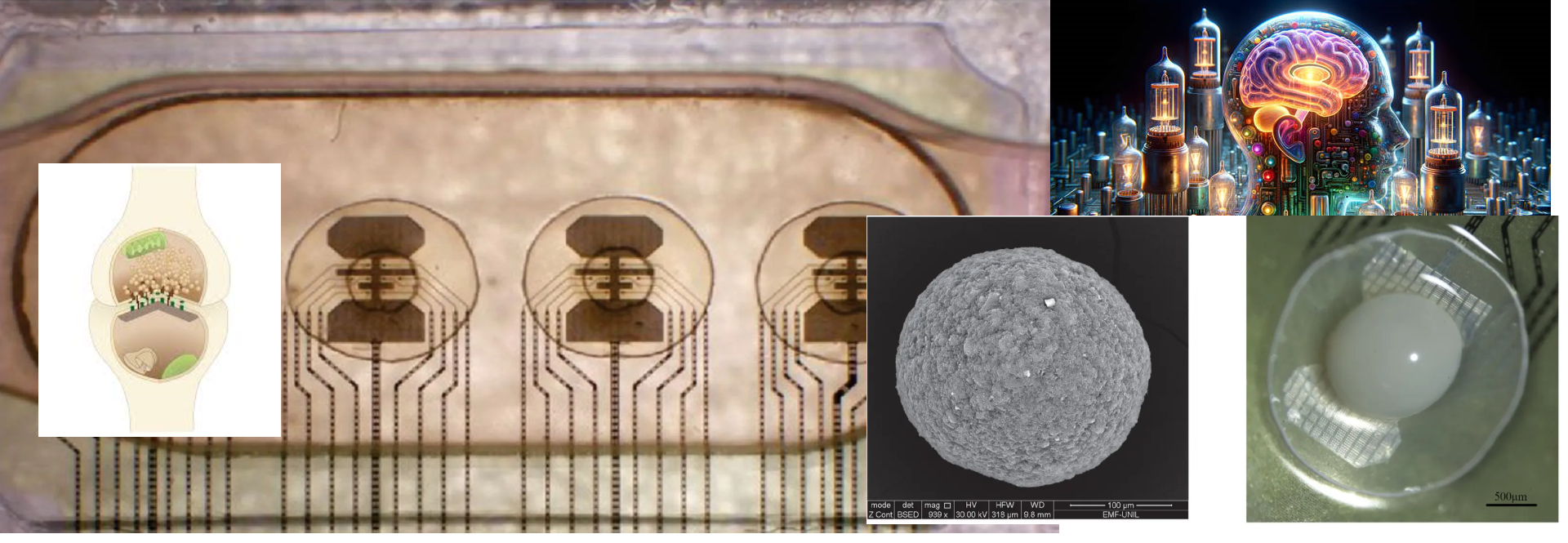Bio Computers
Posted on August 18, 2024 • 4 minutes • 694 words
In the age of Artificial Intelligence, one cannot help but ponder about the potential of natural intelligence. The pace and efficiency at which AI performs tasks is unrivalled by any skilled human. From the early 2000s, the best minds of chess could never defeat a well-trained machine. While natural selection appears to be weak, the best argument we have against man-made intelligence is that it’s limited. Humans process input from 5 different senses, are fairly good at many things, and are more sustainable- all thanks to our complex neurons. Biological machines are designed to operate optimally with available resources, while AI is built to perform best with the resources we provide. What if we could combine the best of both worlds? Imagine AI inspired by nature, learning with fewer resources and replacing silicon-based neural networks with actual neurons. Dear readers, today, let us understand wetware computation and explore learning from the tools of learning, “neurons”.
Let’s delve into the concept of wetware computation and explore the possibility of learning from the tools of learning: neurons. Before training a neural network, we need data. This data can be text, images, or voice-based. Silicon-based computers understand numbers, so we convert letters into codes, pictures into pixel intensities, and voice into amplitude-frequencies. This conversion allows us to leverage the computer’s computational power to process the information. A simple example of learning is showing a machine a few pictures of cats and dogs and then testing its ability to recognize new images. If the machine is correct, it receives a reward (weight), and if it’s wrong, the reward is removed. This process is similar to how wetware computation works.
In wetware computation, instead of silicon chips, we use neuron cells that form an organoid. These cells connect with each other through synapses, creating a miniature brain. The organoid is grown on top of Micro-electrode-Arrays (MEAs), which provide electrical signals as inputs. For example, a picture of a cat can be divided into three channels of RGB. Each layer has several pixels with different intensities. A silicon-based computer processes this as multidimensional data. Neurons, on the other hand, can receive the three channels as different frequencies of electrical impulses, either spatially (different neurons receiving different pixels) or temporally (intensities of pixels provided over time). Another input method can be by expressing different ion channels in neurons that light up with different colors of light. Then we just shine the image directly on the organoid. Neurons fire electrical impulses, which can be recorded by the MEAs that also provide the input impulses.
After being exposed to both cats and dogs, neurons fire randomly. As they exhibit slight differences in excitation patterns between the two, we provide neurotransmitters or chemical rewards to reinforce the distinction. With each iteration, the neurons become better at recognizing different images. This reinforced iterative training helps the organoids understand favourable responses. They can be trained to perform tasks like addition, pattern recognition, or even play Pong.
The most remarkable aspect of neurons is their ability to cluster data and form strong synapses based on their firing patterns. “Cells that fire together, wire together” means that the learning process doesn’t always need supervision. Neurons are also adept at handling temporal data and forming strong or weak links and assemblies. Having a wetware computation device would make you feel the power of the brain in the center of your flask. Such a system consumes millions of times less energy than a silicon-based computational device, and experiments can be conducted on these in-vitro neurons from the comfort of your home.
While more research is needed to improve algorithms for training and extracting information from neurons, the integration of biological networks with artificial neural networks is a promising field for enhancing learning and understanding biological systems. In the future, it might even be possible to take your skin cells, reprogram them into neural cells, and use them to train yourself to live a hundred more years with significantly reduced resource consumption. Alternatively, AI might harness the power of biological intelligence to improve its performance, potentially leaving humans behind. Regardless of the outcome, the future of wetware computation is undeniably exciting.
